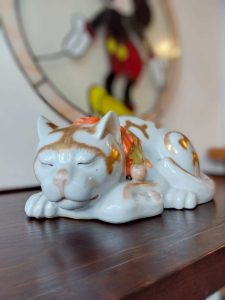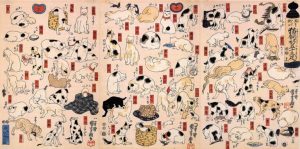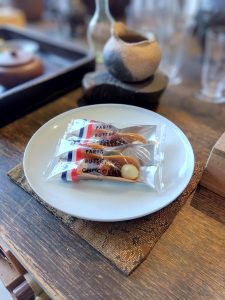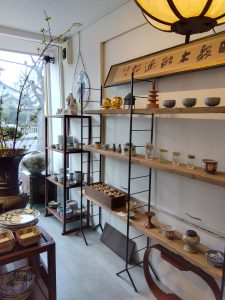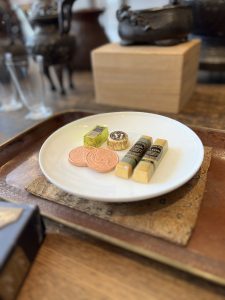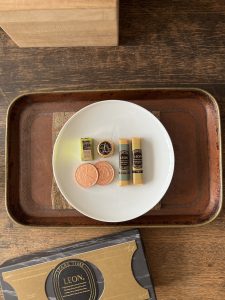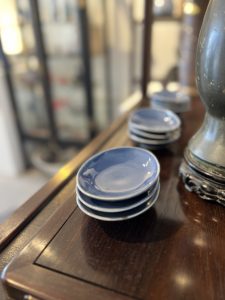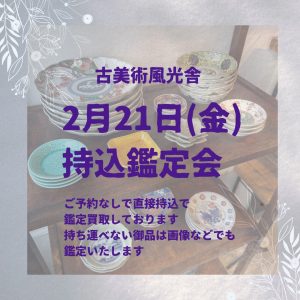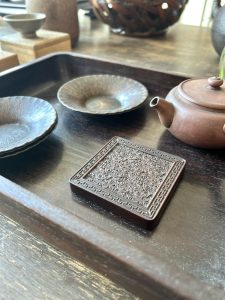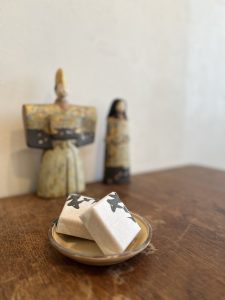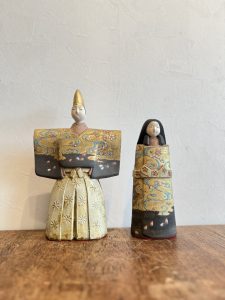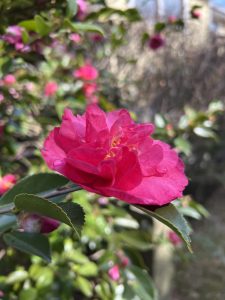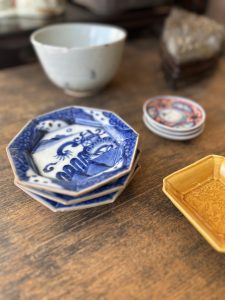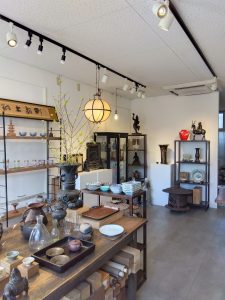語呂合わせにはいつも助けられています(愛知県名古屋市千種区姫池通 骨董買取 古美術風光舎)
2025.02.23
昨日のブログにも取り上げられた猫の日、私は初耳だったのですが、昨日会った数人から「今日は猫の日だよね」という話題が上がり、そんなに広く認知されている日なのかと驚きました。2月22日の語呂合わせからきているとのこと。では本日2月23日は?というと、これもまた語呂合わせで「富士山の日」だそうです。山梨県と静岡県において条例で定められています。富士山を巡って山梨県と静岡県では様々な論争があるようですが、富士山の山頂はどの県にも属さず、8合目より上は富士山本宮浅間大社の私有地となっています。
語呂合わせというと、学生時代に泣かされた歴史の年号の暗記を思い出します。こんなバカげた語呂合わせで覚えられるのかというものもありましたが、案外そのふざけた語呂合わせが記憶にしっかりと残っており、随分と助けられました。他人には言えないちょっと気恥ずかしくなる語呂合わせを自分で作るなどして乗り切った覚えがあります。
聞くところによりますと、今は歴史の授業において年号を覚えることよりも、歴史で起こった出来事を深く掘り下げ、その前後の流れを学び、なぜそうなったのかを考えさせるような内容に変わってきているそうです。また世界史と日本史を分けるのではなく、並行して学習するという方向に向かっているのだとか。
学生時代は暗記の多い歴史の授業が苦手で、歴史自体にもあまり興味が持てず、自分は歴史の勉強が嫌いなのだと思い込んでいました。しかし現代の便利なツールを利用して学ぶうちに面白くて仕方がないと感じるようになっています。今の子供達は恵まれていますね。お陰様で私の歴史音痴も少しずつ解消されている気がいたします。
ちなみに外国語でも年号の覚え方があるのか気になりまして調べてみますと、英語では少し事情が違うようでして、例えば ”I sighted Thomas’s rights. “という文があるのですが、単語のアルファベットの数を数えると、それぞれ1776ととなりアメリカ独立宣言が採択された年号を覚えられるのだとか。独立宣言に貢献したトーマス・ジェフソンの名前も含まれています。数えるのにちょっと時間がかかりそうだし、英単語を間違えて覚えていたらアウトだなと思ってしまうのは私だけでしょうか。他にも南北戦争が終結した年号で “I captured south’s flags” 1865年というのもあるそうです。中々高度な技に思えるのですが、お国が違えば覚え方も様々ですね。ただどこの国でも年号を覚えるのに苦労しているのは確かなようです。
韓国語では日本語のように音を数字と一致させた語呂合わせがあるようです。
2は「イ」、4は「サ」と発音し、「イサ」は引っ越しを意味するため、引っ越し屋さんの電話番号は24が多く使われるのだとか。他には51「オイル」からガソリンスタンド。2「イ」8「パル」は「イッパル」=「歯」から歯医者さんなどの電話番号に使われるそうです。
無機質で覚えにくい数字は語呂合わせをすることで意味を持たせ、覚えやすくなるというのは万国共通のようです。
そういえば、どうしても覚えられない英単語も、とても人様には言えないくだらない語呂合わせを作って覚えておりました。そちらが楽しくなって時間が過ぎるという事態にも陥りましたが…。発音的にどうなのかという問題はさておき、何度か思い出すうちに記憶に定着し、そのうち正しい発音も覚えるので大丈夫なはずと言い聞かせていました。
現在は受験シーズン真っ只中。昔は縁起をかつぎ、「勝つ」の語呂合わせから「とんかつ」を食べるということがありましたが、油で胃もたれする可能性もあるとのことで登場することが減ってきているのだとか。最近は切り口が五角形になるおくら「切っても切っても互角(ごうがく)」、魚の「西京(さうきょう)焼き」、れんこん(見通しがつき試験に通る)などが入ったお弁当が作られているのだそうです。
受験生の皆さま、体調を整え、存分に力を発揮できますように。
それでは、また次の機会に。(スタッフH)
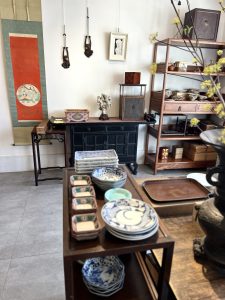
I had never heard of Cat Day, which was mentioned in yesterday’s blog, but a few people I met yesterday talked about how today is Cat Day, and I was surprised to hear that it is so widely recognized. So what about today, February 23? It is also called “Mt. Fuji Day. Fuji Day”, which is also a word that comes from the Japanese syllabary. Fuji does not belong to any prefecture, and the area above the 8th station is the private property of the Mt.
Fuji is not part of any prefecture, and the summit above the 8th station is privately owned by Mt. I wondered if I would be able to memorize such a silly set of words, but surprisingly, the jokey combination of words remained firmly in my memory, and helped me a lot. I remember getting through it by making up my own slightly embarrassing alliteration that I couldn’t say to others.
I have heard that history classes are now more about digging deeper into historical events, learning the flow of events before and after them, and making students think about why things happened the way they did, rather than memorizing the year numbers. In addition, they are moving in the direction of parallel study of world history and Japanese history, rather than separating the two.
When I was a student, I was not very good at history classes, which required a lot of memorization, and I was not very interested in history itself, and I thought I did not like studying history. However, as I learned using modern and convenient tools, I began to find it interesting. Children today are blessed, aren’t they? Thanks to you, I feel that my aversion to history is gradually disappearing.
For example, there is a sentence “I sighted Thomas’s rights.” If you count the number of letters in the word, it becomes 1776 and 1776 respectively, which is the year when the American Declaration of Independence was adopted. If you count the number of letters in the word, you can remember the year in which the Declaration of Independence was adopted. It includes the name of Thomas Jefferson, who contributed to the Declaration of Independence. Is it just me, or does it seem to take a bit of time to count, and if I remember the English words incorrectly, I’m out of luck? Another year is “I captured south’s flags” 1865, the year the Civil War ended. It seems like a very advanced technique, but I guess different countries have different ways of remembering things. However, it is true that every country has a hard time remembering the year.
In Korean, there seems to be a system of matching the sound with the number, like in Japanese.
Two is pronounced “yi” and four is pronounced “sa,” and “isa” means moving, so 24 is often used as a phone number for movers. Other numbers are 51 “oil” for gas stations, and 2 “y” and 8 “pal” are used for telephone numbers for dentists, etc., because “yippal” = “tooth”.
It seems to be common throughout the world that numbers that are inorganic and difficult to remember can be made meaningful and easy to remember by combining them with other words.
Come to think of it, I used to remember English words that I just couldn’t remember by making up silly alliterations that I couldn’t tell anyone about. I also enjoyed doing that and time would pass by…. I told myself that, aside from the question of how it was pronounced, it would stick in my memory as I recalled it several times, and eventually I would remember the correct pronunciation, so it should be fine.
Now is the season of entrance examinations. In the past, people used to eat “tonkatsu” (pork cutlet) for good luck and to “win”, but the appearance of tonkatsu has been decreasing because of the possibility of stomach upset due to the oil. Recently, bento lunches are being made with the family’s wishes in mind, such as Okura (a kind of okra with a pentagonal shape at the cut end), Saikyo-yaki (grilled fish), and Renkon (a kind of lotus root that gives one a clear outlook and helps one pass the examinations).
To all the students preparing for the examinations, I wish you all to be in good physical condition and to exert yourselves to the fullest.
See you next time. (Staff H)
*****************
ご実家の整理やお片付けなどをされている方のご相談などが多くございます。
お片付けなどくれぐれもご無理のないようになさってくださいませ。
風光舎では古美術品や骨董品の他にも絵画や宝石、趣味のお品など様々なジャンルのものを買受しております。
お片付けをされていて、こういうものでもいいのかしらと迷われているものでも、どうぞお気軽にご相談下さいませ。
また風光舎は、出張買取も強化しております。ご近所はもちろん、愛知県内、岐阜県、三重県その他の県へも出張いたします。
まずは、お電話お待ちしております。
愛知県名古屋市千種区姫池通
骨董 買取【古美術 風光舎 名古屋店】
TEL052(734)8444
10:00-18:00 OPEN
#出張買取#骨董#古美術#骨董品#絵画#版画#茶道具#刀剣#彫刻

